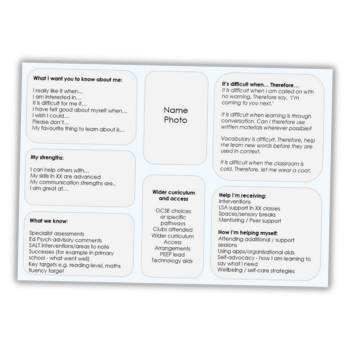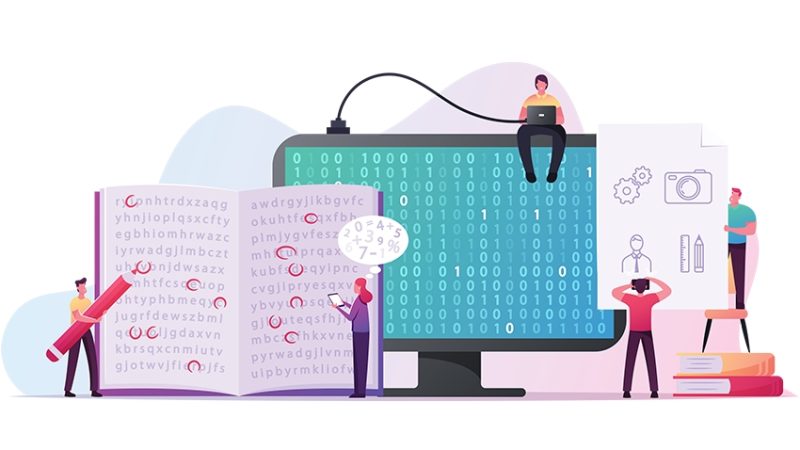Help Students Find Time to Access the Breadth and Depth of Education to Succeed

There's only so much learning that can be squeezed into the week, so how can students explore their passions in school and out to stand out to future universities or employers? Paul Merrell may have a solution…

- by Paul Merrell

Knowing my interest in all things geeky, a student recently recommended I picked up a translation of Liu Cixin’s The Three-Body Problem.
The first in a trilogy (and I’ve only just moved on to The Dark Forest, so no spoilers please!), the novel focuses on a civilisation repeatedly destroyed by the devastating interactions of their three suns.
Their struggle to overcome ‘the three-body problem’ leads them to seek out a new home and, at the conclusion of the first book, close in on invading Earth.
As I switched off my Kindle last night, it struck me that my students are involved in their own version of ‘the three-body problem’.
For sure, there are no stars in random orbit around them causing startling switches from ‘Chaotic’ to ‘Stable Eras’, but they do have their own mutually exclusive, yet inherently linked, pressures.
We can identify their ‘three bodies’ as breadth, depth and time.
Come September I often hear the popular refrain: “I have nothing to put on my personal statement!”. Of course, this is rarely true, but certainly, it seems to me, students are finding it increasingly difficult to find the time in which to develop themselves outside the classroom.
Such are the ever greater demands of the curriculum – the depth required for successful study seems greater with every new specification – there is little time left to develop the breadth of wider interests that not only make a student stand out in an ever-competitive University field, but, also, is just plain healthy.
Students should have a wide breadth of interests, and they should be able to have the time to explore them, without comprising the depth of their studies.
However, as with the ‘Three-Body Problem’ of the Trisolarans, it can feel like this is an irreconcilable triplet.
How can a girl play hockey for the school (with all the vital lessons missed that this entails) and for her club over the weekend (missing valuable independent study time) yet still end up with appropriate results to sit alongside the valuable experience she has had on the field?
Obviously, this struggle for breadth, depth and time is an age old problem for schools – albeit one exacerbated in our current high-pressure/high-stakes academic climate.
However, I might suggest that, at Queenswood, we have recently hit upon the sort of technological-based solution to the issue that would cause the Trisolarans to send two extra protons to Earth. (OK, that’s a pretty niche reference unless you’ve read the book. Do so. It is awesome!)
A key way in which we approach the Three-Body Problem is to make use of Google Classroom.
For those unfamiliar, this is an app that sits on the phone/tablet/laptop of the student and they can use it to interact with their teacher in a 1-2-1 environment.
You can do lots of whizzy things with it – from completing and marking assignments, to asking questions, to having the whole class collaborate on one activity.
However, the most significant aspect of Classroom in relation to the ‘three-body problem’ is as a repository for lessons.
With a click of a button, teachers are able to quickly upload the materials from the lesson to Classroom (plus any extra reading, useful videos or suggestions for wider research) and if a student has missed the lesson, all they need to do is to log into Classroom to instantly see what has been done.
No more copying up notes from someone else. No more waiting until the return to lessons to find out what has been missed. No more trying to find a spare second to have the lesson retaught to them 1-2-1. Everything is there instantly.
And, crucially, it stays there permanently – as a chronologically constructed, digital textbook. As my classes begin their revision, they are finding the ability to track back through the lessons, week by week, to be invaluable.
As an example of Classroom in action, I recently had a student competing at the World School Games in Morocco. She is pushing herself in precisely the way in which we would hope a well-rounded student would.
Nevertheless, because of the ‘Three-Body Problem’, she would be struggling for time to catch-up in all her subjects on her return.
Indeed, the depth of her understanding would depend on if she could unpick the notes her classmates had written during the week.
Of course, I could sit with her on her return, but she has eight other subjects for which she is also missing a week of work.
This, potentially, could be a grim period of catch-up which might make her question whether she really wants to undertake such breadth activities again.
However, with Classroom she could log on in Morocco, during her downtime, see the materials from the lesson each day and stay in touch with the class.
We were even able to converse, in the Classroom timeline, over anything with which she was unclear. (Often, a classmate answered her questions asked before I got to them!) When she returned, she will be very much still in touch despite her week away.
And it’s not just student absence that Classroom can support. I’ve missed a number of lessons with my Year 12s this year as I’ve been on various courses.
Normally, I’d be concerned about whether I might be compromising the depth of knowledge here and would be needing to find the time to run extra classes.
However, with Classroom I was able to record myself talking them through the section of Chaucer we were to look at that day on the train to the course and then upload it for them to watch during the normal lesson time. I then answered any questions they had on the journey home!
So, as is really the moral of The Three Body Problem, the key to solving the time, depth and breadth issue is not simply saying that students must work harder. The answer comes in finding innovative solutions which move beyond the traditional approaches.
There is only a finite amount time that can be dedicated to breadth and depth – so it is fortunate we have found a way to use it in a way to avoid being ‘squashed like bugs’. (final novel reference: you must make sure you read it!)
Paul Merrell is an English teacher and a Google Certified Innovator. Find him at mrpjmerrell.wordpress.com and follow him on Twitter at @pjmerrell.










